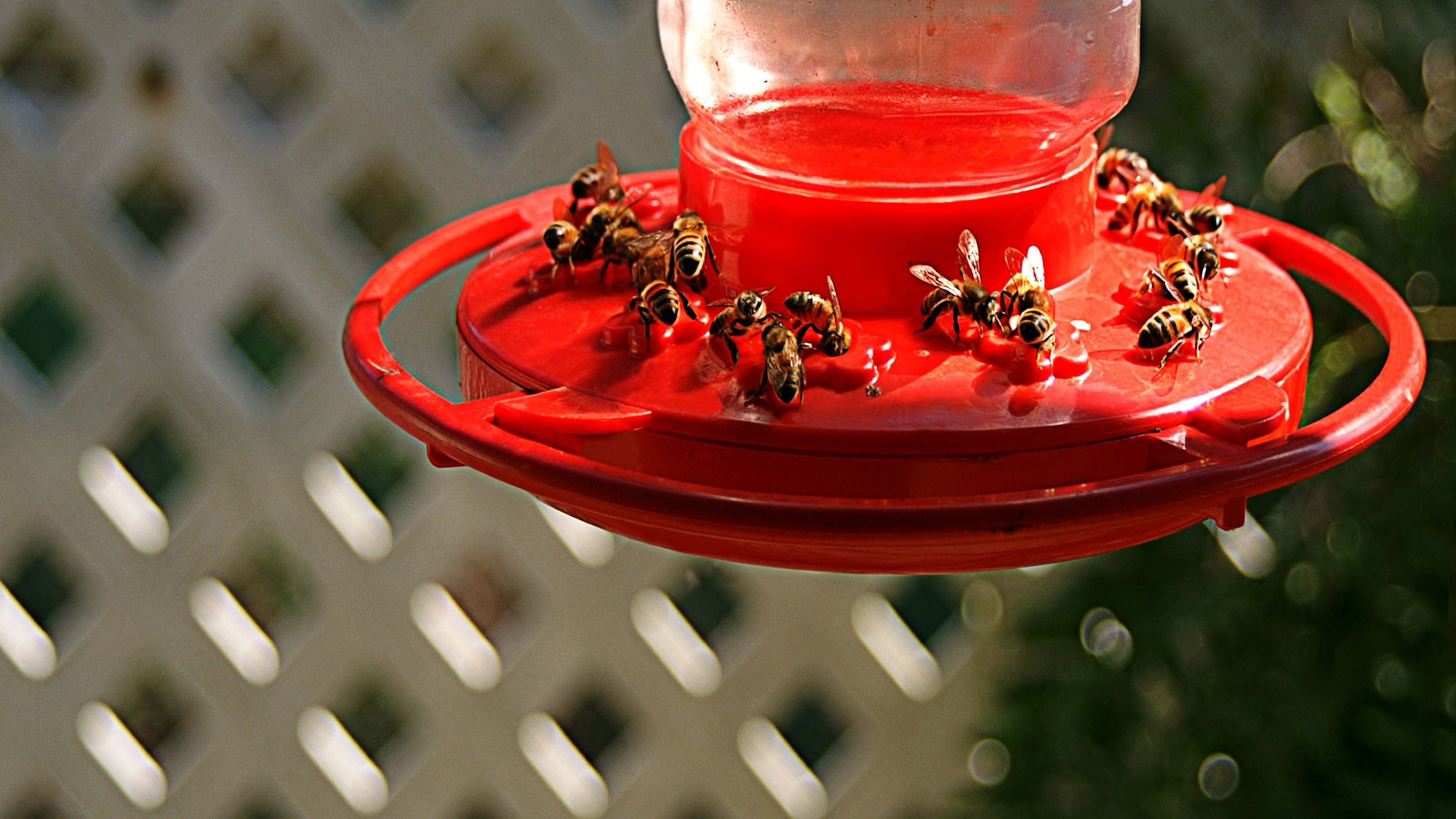
If you need to know how to keep bees away from hummingbird feeders, we hear you. As much as we love bees and understand their crucial importance to our world, seeing them swarm around your hummingbird feeder can be a bit annoying, if not quite dangerous. After all, your reason for installing a hummingbird feeder in the first place was to watch hummingbirds not bees. What's to be done?
The best news is that getting bees out of your yard and away from hummingbird feeders doesn't have to interfere with your plans to create a bee-friendly garden. All of the expert-led tips in this article are kind to bees and don't involve harming them in any way. In fact, some of the tips are designed to make your yard or garden even more bee-friendly than before.
Zack DeAngelis is the creator of Pest Pointers. He grew up in an area of Upstate, NY where dealing with wildlife pests is a common occurrence. When he's not out roaming around 50+ acres of pastures, woods, and a freshwater bass pond, he's at my computer writing on Pest Pointers. Zack has been featured in a wide variety of outlets listed below and primarily specializes in natural pest control methods for your home and garden.
How to keep bees away from hummingbird feeders
Who is better positioned to give tips for keeping bees away from hummingbird feeders than a natural pest control expert? Zack DeAngelis is the creator of Pest Pointers and has many years of experience dealing with bees in hummingbird feeders. Here are his top tips for keeping them away.
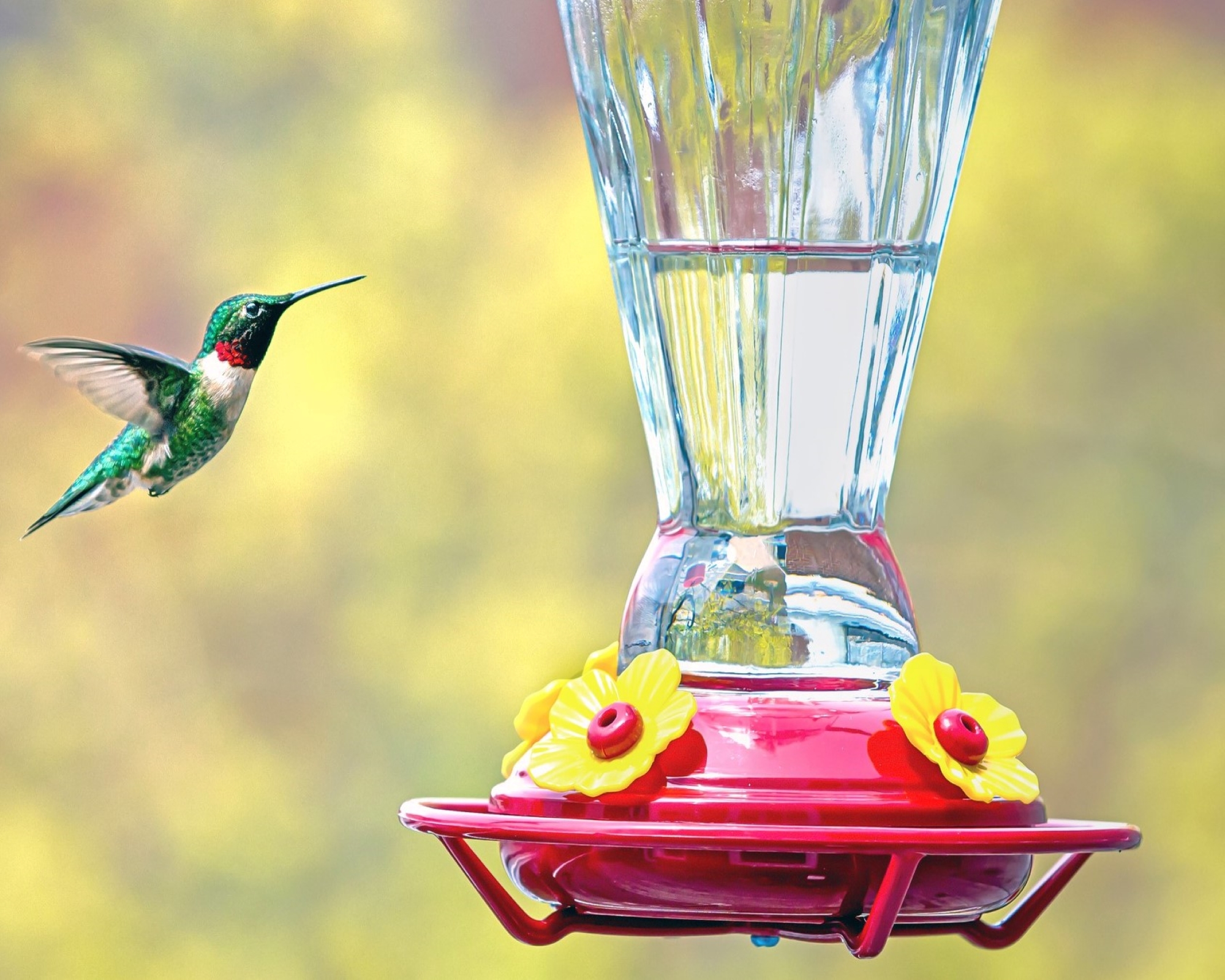
1. Use a feeder that has built-in bee guards
De Angelis names this as his 'favorite tip to keep bees out of hummingbird feeders' because it's so simple and effective. Bee guard hummingbird feeders can be bought on Amazon for $15-20 and really work. De Angelis explains how: 'The guards protrude outwards so that only the hummingbird can easily access the nectar. The trick to actually making these types of feeders successful at keeping bees away is by constantly cleaning feeders for any nectar that may spill out while hummingbirds are feeding.
'I really like the Perky Pet feeder and it's what we have my grandmother use. The only downside is that it has yellow feeding tips but that can be mitigated by keeping the feeder clean.'
2. Try putting an onion bag over the feeder
Mesh onion bags are accidentally one of the best solutions for keeping bees away from hummingbird feeders. Firstly, they happen to be exactly the right shape to cover a feeder. Secondly, their color will help keep bees away. De Angelis advises that 'bees are attracted to the color yellow, where most hummingbird feeders are red with yellow feeding tips that resemble flowers (we wonder why bees are attracted to these!)
'A quick solution to this is to place part of an old meshed onion bag over the top of the feeder. This will help deter bees, and still make sure that hummingbirds can get their beak on the inside. Try to aim for a dark-colored onion bag to avoid resembling bright, floral colors that bees like.'
3. Dilute the nectar
'Look to dilute your hummingbird nectar by 25%-50% of its current concentration. Make sure to monitor that hummingbirds are still enjoying the feeder, but this will help make the mixture a bit less attractive to bees. I don't like moving the feeder as it won't be in your preferred spot. Rather, keep the feeder clean, use a bee-proof designed feeder, and dilute the concentration by up to 50%. Simple as that!'
4. Add a bee moat
You can also try the bee moat metod instead of buying a bee-guard hummingbird feeder. Charles van Rees, Conservation Scientist and blogger at Gulo in Nature, explains that 'adding a bee-moat, a tray of water that adds some distance between the nectar source and any airborne suitors may also prove effective since bees can't swim. I use one of these for my feeder; I have to fill it up again every couple of days but it seems to work well.'
5. Keep feeders clean
This is an essential step toward keeping bees away from your hummingbird feeder. 'Not only does this protect the health of your hummingbirds, but it will prevent sugar from building up on the surfaces of the feeder, which will attract bees in the first place.'
Avoid excess sugar collecting on the outside of the feeder during filling, 'and check carefully for leaks', van Rees says. 'Using too much sugar in your hummingbird food can also cause extra sugar to collect outside of the feeder.'
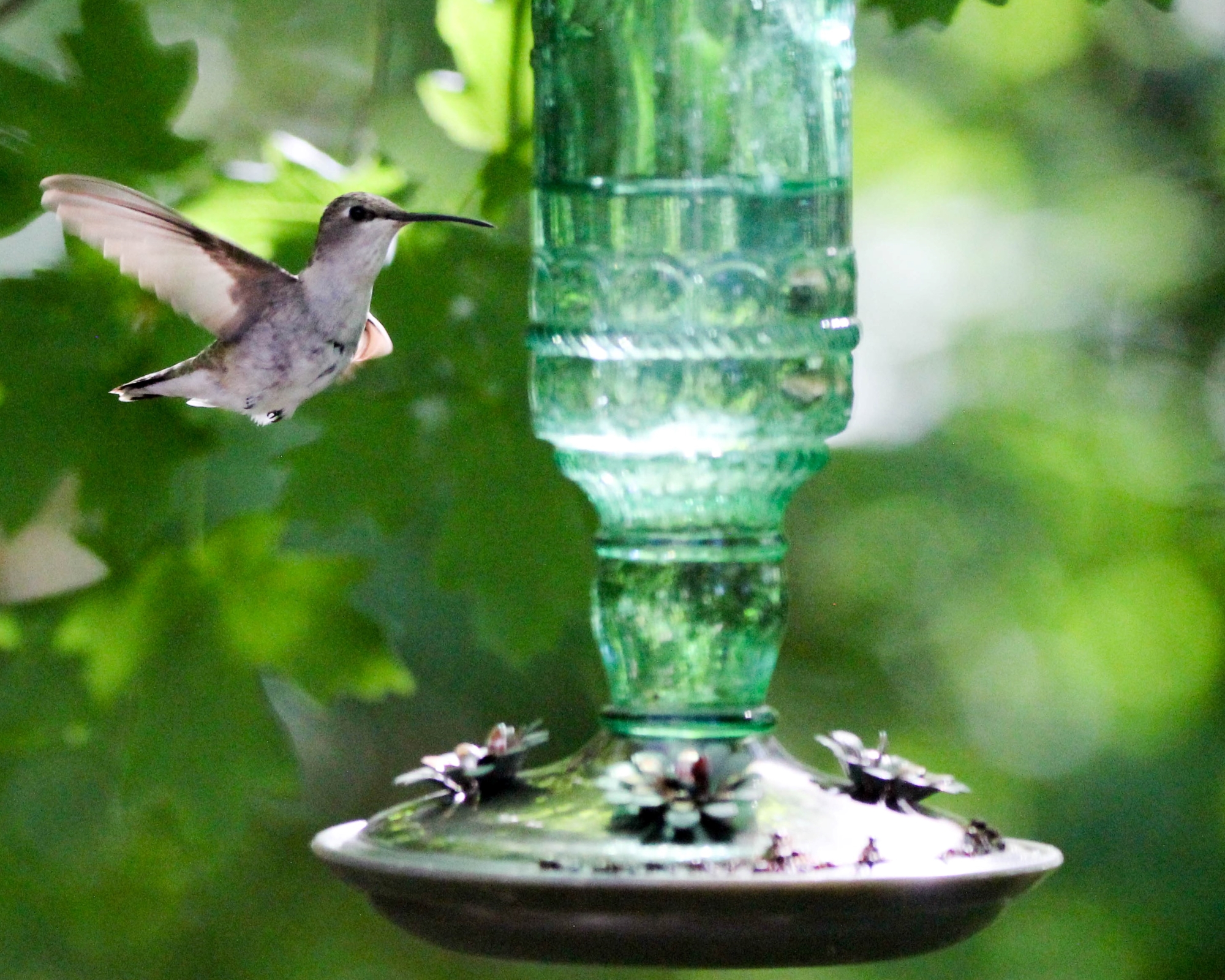
6. Provide alternative food sources for bees
Adding bee-friendly garden plants to your yard will go a long way toward deterring them from your hummingbird feeders. Van Rees recommends planting 'bee-magnet flowers like various mints, lavender, coneflower, sunflowers, and catnip', as well as providing water sources for the bees such as 'muddy puddles or birdbaths and placing those features strategically in your garden.'
Plus, the likes of mint, lavender and catnip are natural mosquito deterrent plants also.
7. Try moving your hummingbird feeder around
Van Rees only recommends this method 'as a last resort' since it's a lot of work, but you can try moving your hummingbird feeder around your yard frequently. The reason this works is that 'bees take time to re-orient to new nectar sources, and they have to show their hive-mates where they are. This makes them slower at taking advantage when the feeder moves, while the hummingbirds should find it quickly.'
This method is more effective in larger yards, as ideally, you should move the hummingbird at least 10 feet away from its previous location each time.
What is the most effective way to deter bees from hummingbird feeders?
It's the bee-guard hummingbird feeder. Van Rees explains that this method essentially mimics what flowers do in nature in order to attract the right kind of pollinator: 'In Central, South, and North America, where you can find hummingbirds,
there are flowers that feed hummingbird pollinators and have to exclude
bees. They typically do this by making the openings to access the nectar
too slender for fatter bees.' This is exactly what bee guards on feeders do. Simple, cheap, and effective.
Will bees leave my yard if I deter them from hummingbird feeders?
They won't if you provide plenty of other sources of food for them. This is best done by enhancing your planting scheme. You can start with wildflower seeds or perennials like lavender to make your yard more attractive to bees without them needing to go for the hummingbird feeder.
Join our newsletter
Get small space home decor ideas, celeb inspiration, DIY tips and more, straight to your inbox!
Anna is a professional writer with many years of experience. She has a passion for contemporary home decor and gardening. She covers a range of topics, from practical advice to interior and garden design.
-
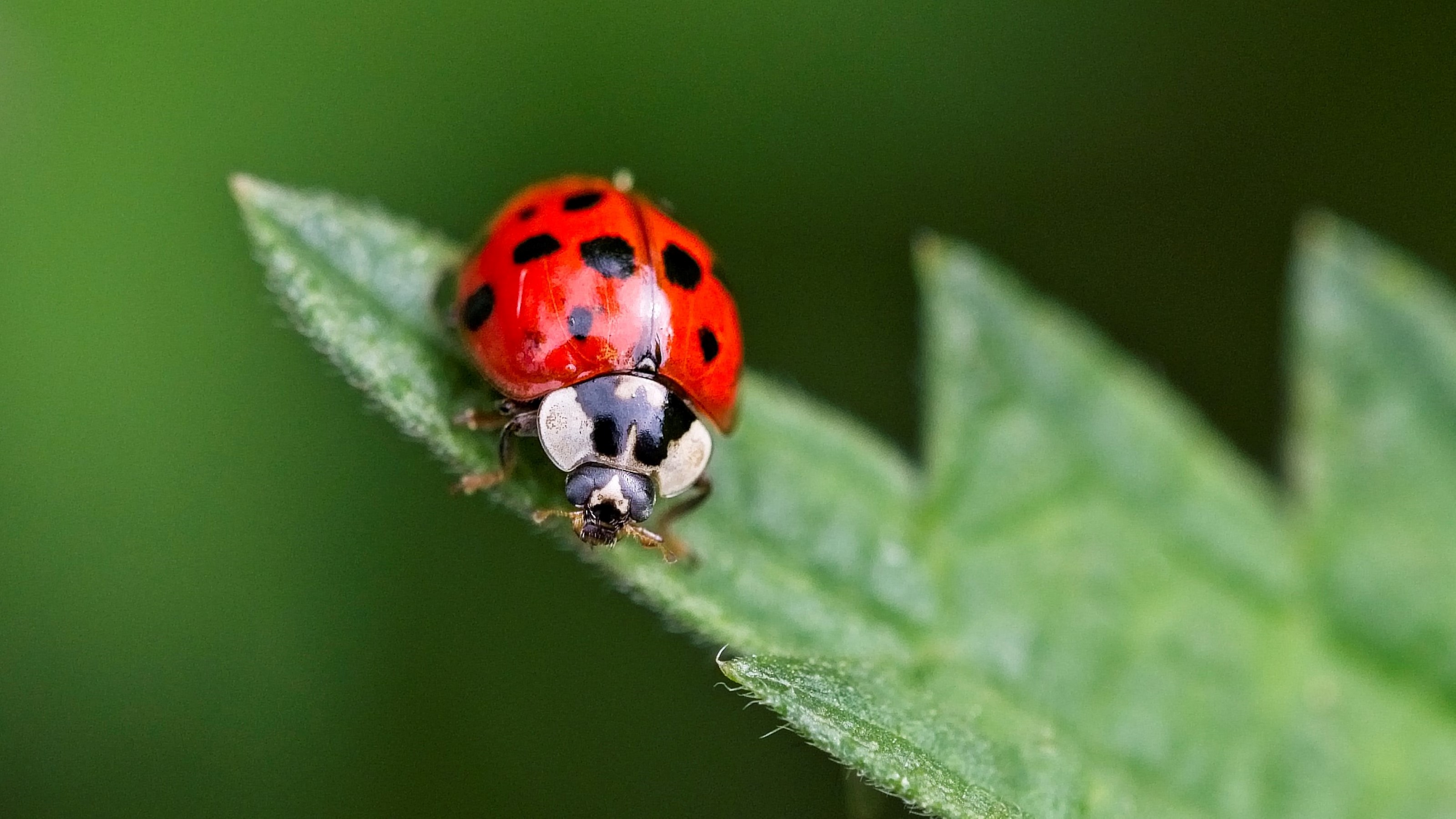 Where to buy ladybugs
Where to buy ladybugsFind out where to buy ladybugs, and what they're useful for in your yard
By Anna Cottrell
-
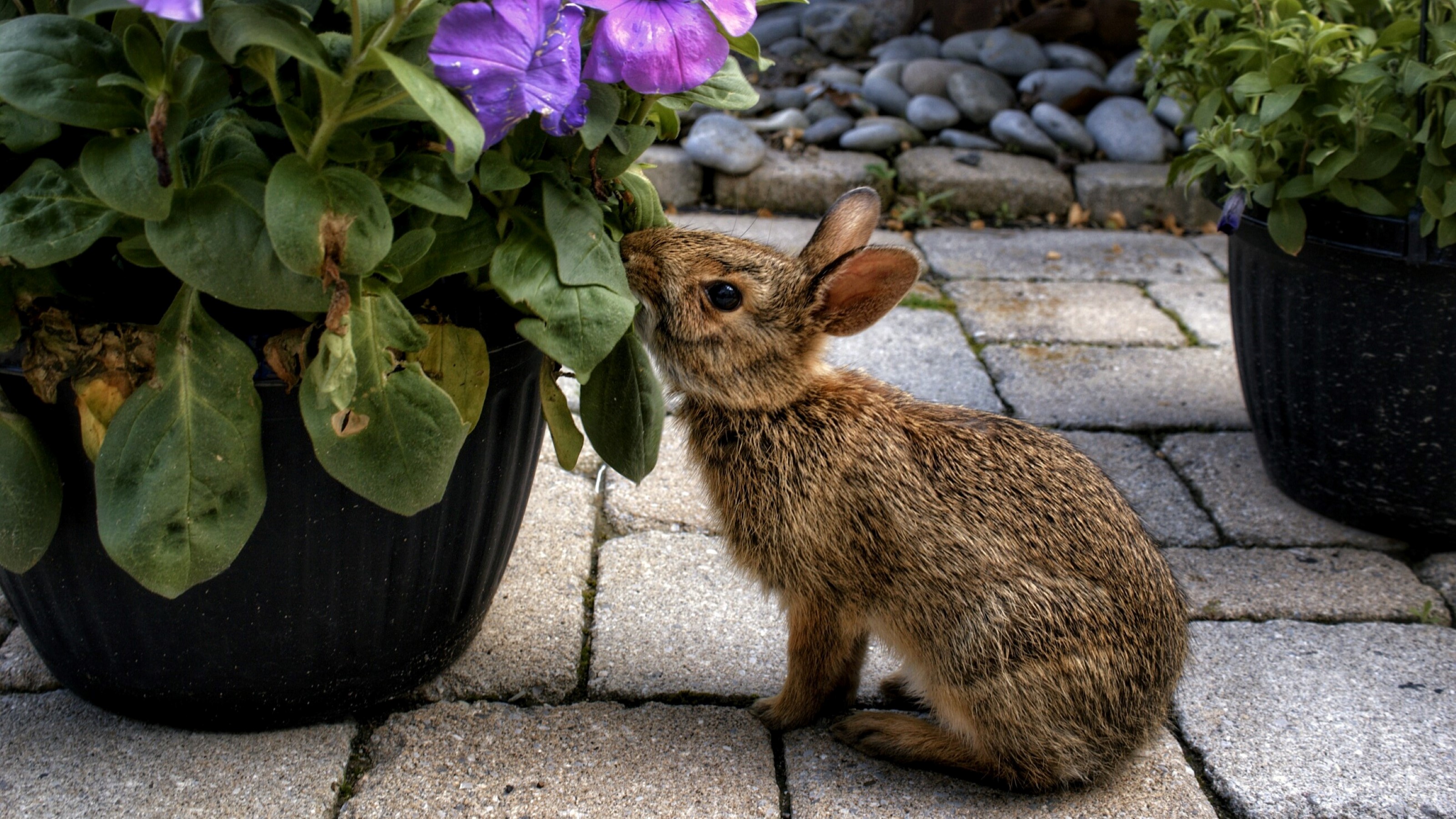 How to keep rabbits out of the garden: 7 kind methods to save your plants
How to keep rabbits out of the garden: 7 kind methods to save your plantsFind out how to keep rabbits out of the garden with these expert-led, kind natured tips
By Anna Cottrell
-
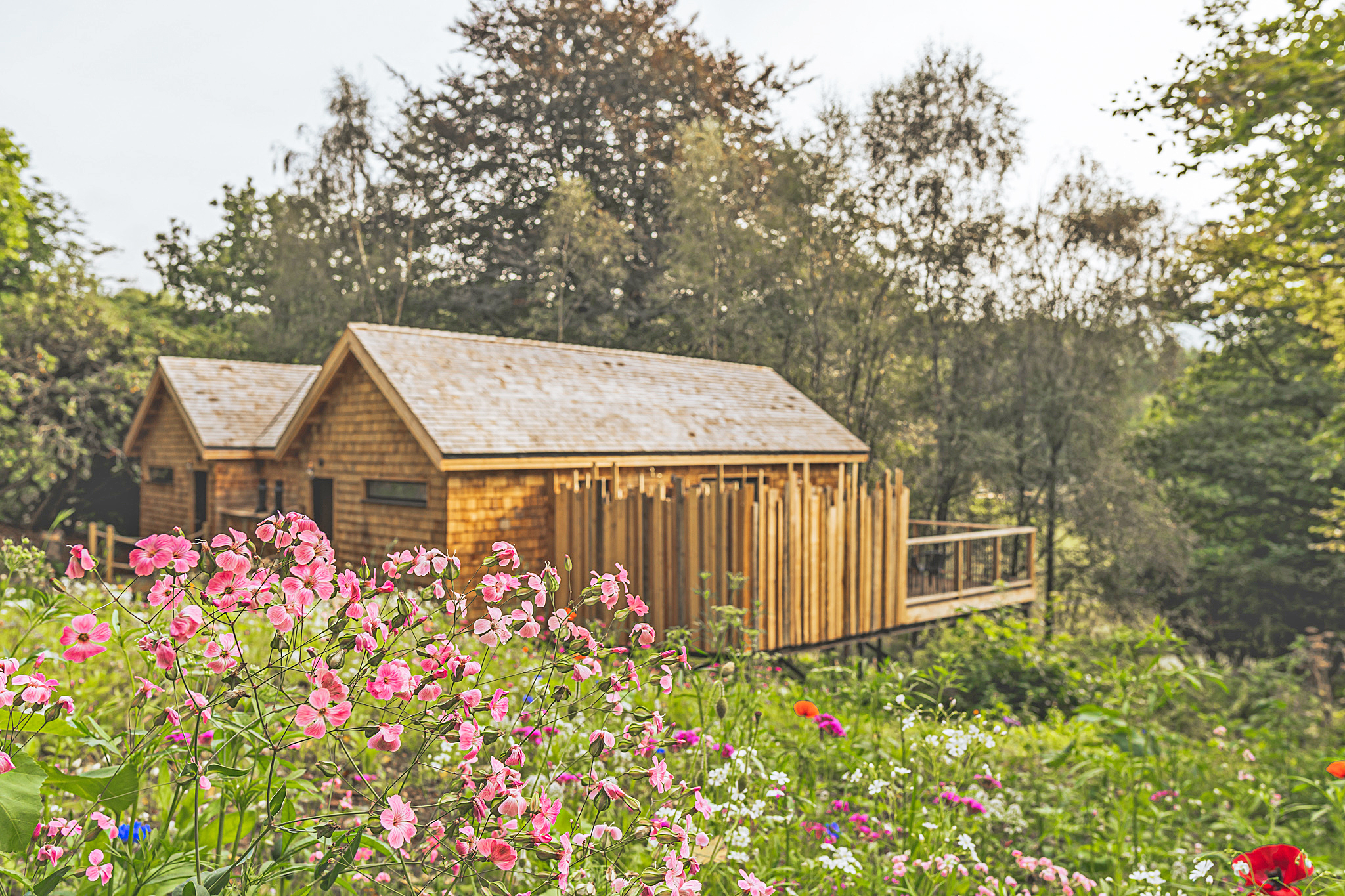 5 non-toxic pest control solutions for planet-friendly gardening
5 non-toxic pest control solutions for planet-friendly gardeningGarden expert Jonathan Race explains how to take a new, natural approach to garden pest control that doesn't involve any nasties
By Lindsey Davis
-
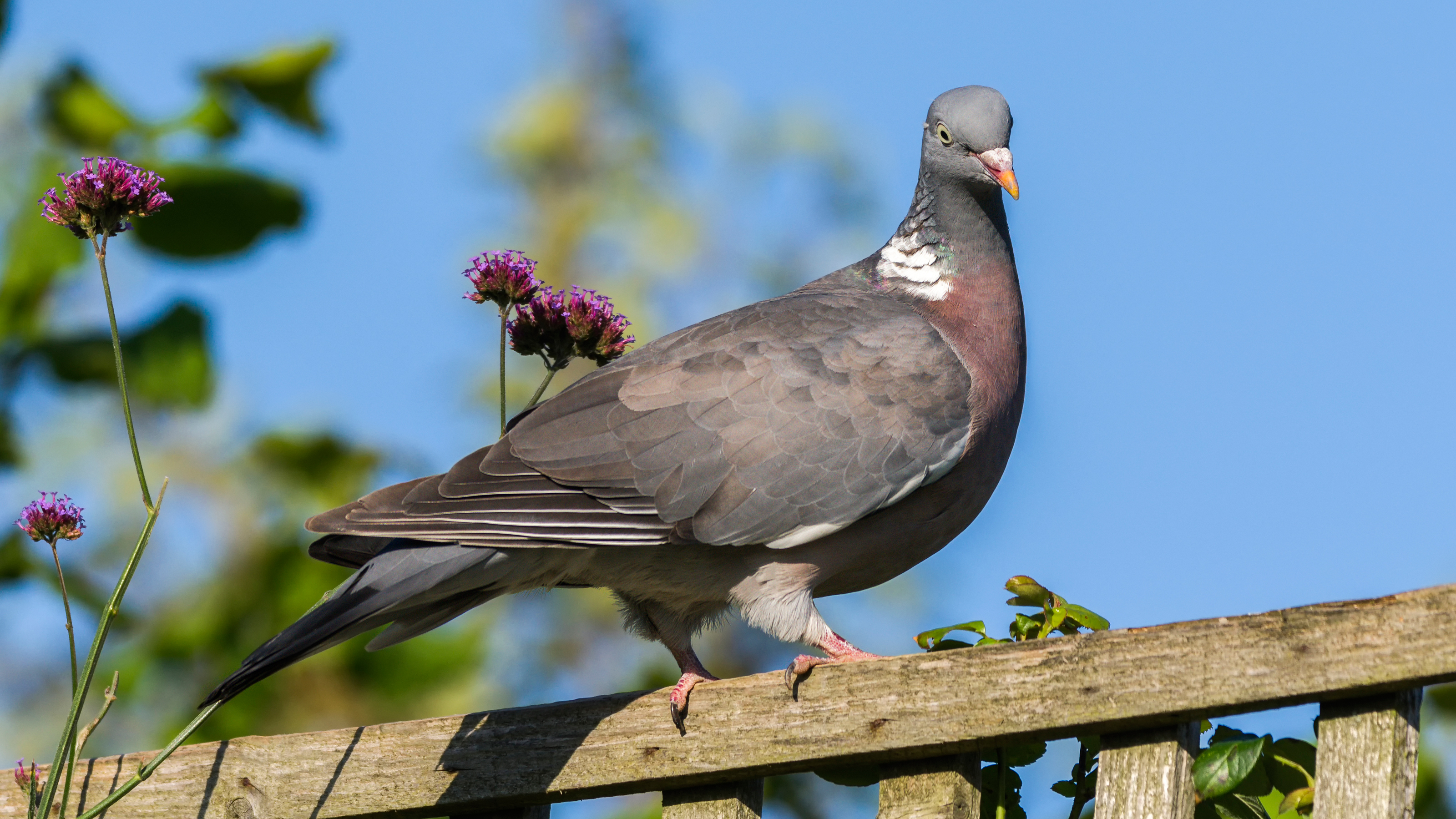 How to get rid of pigeons on your balcony or patio
How to get rid of pigeons on your balcony or patioFind out how to get rid of pigeons, whether they're roosting on your balcony or occupying your front porch or roof – these tried and tested pigeon deterrent methods are used by professionals
By Anna Cottrell
-
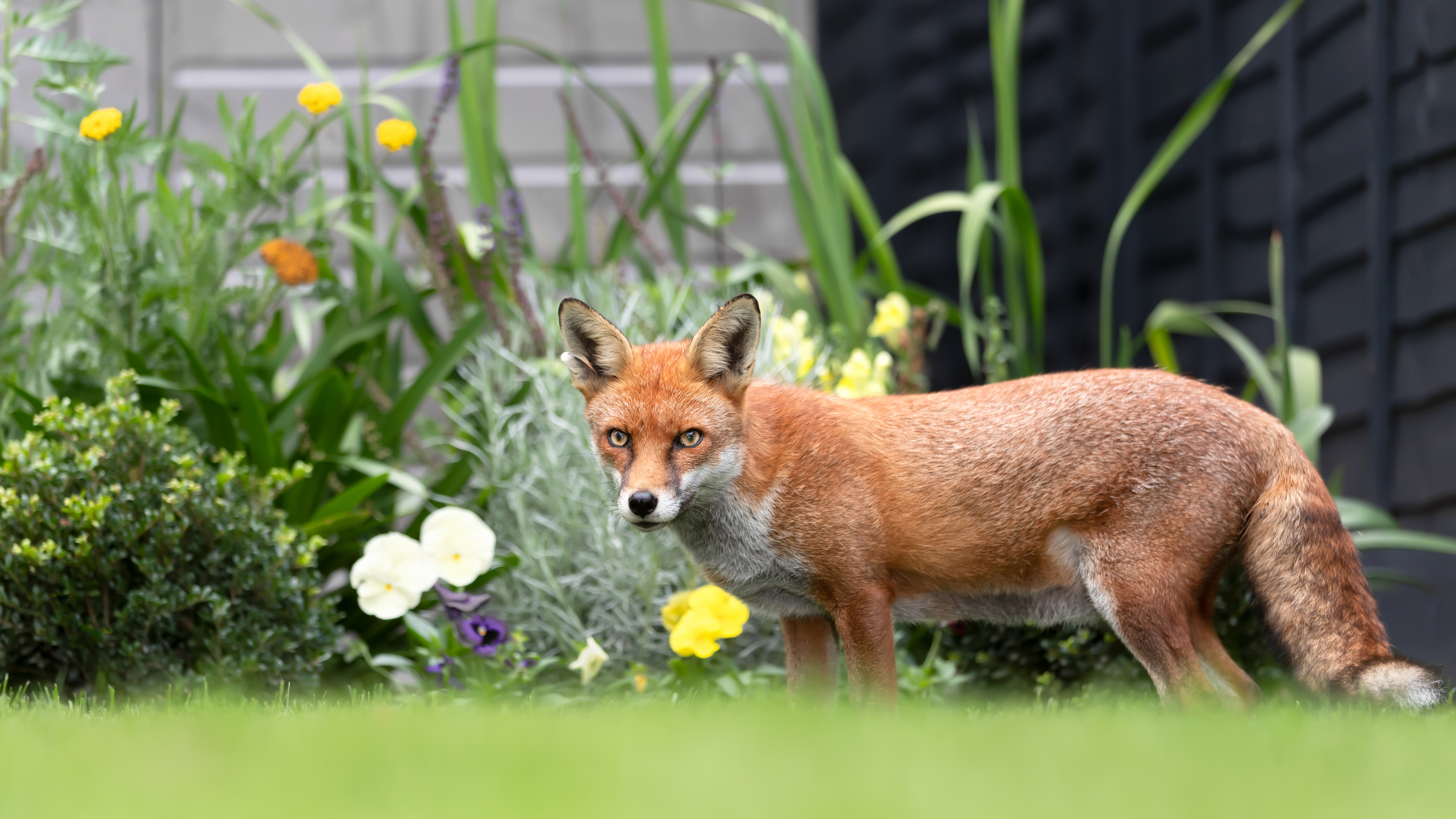 How to deter foxes from your yard and garden, without harming them
How to deter foxes from your yard and garden, without harming themFind out how to deter foxes from your yard – humanely
By Anna Cottrell
-
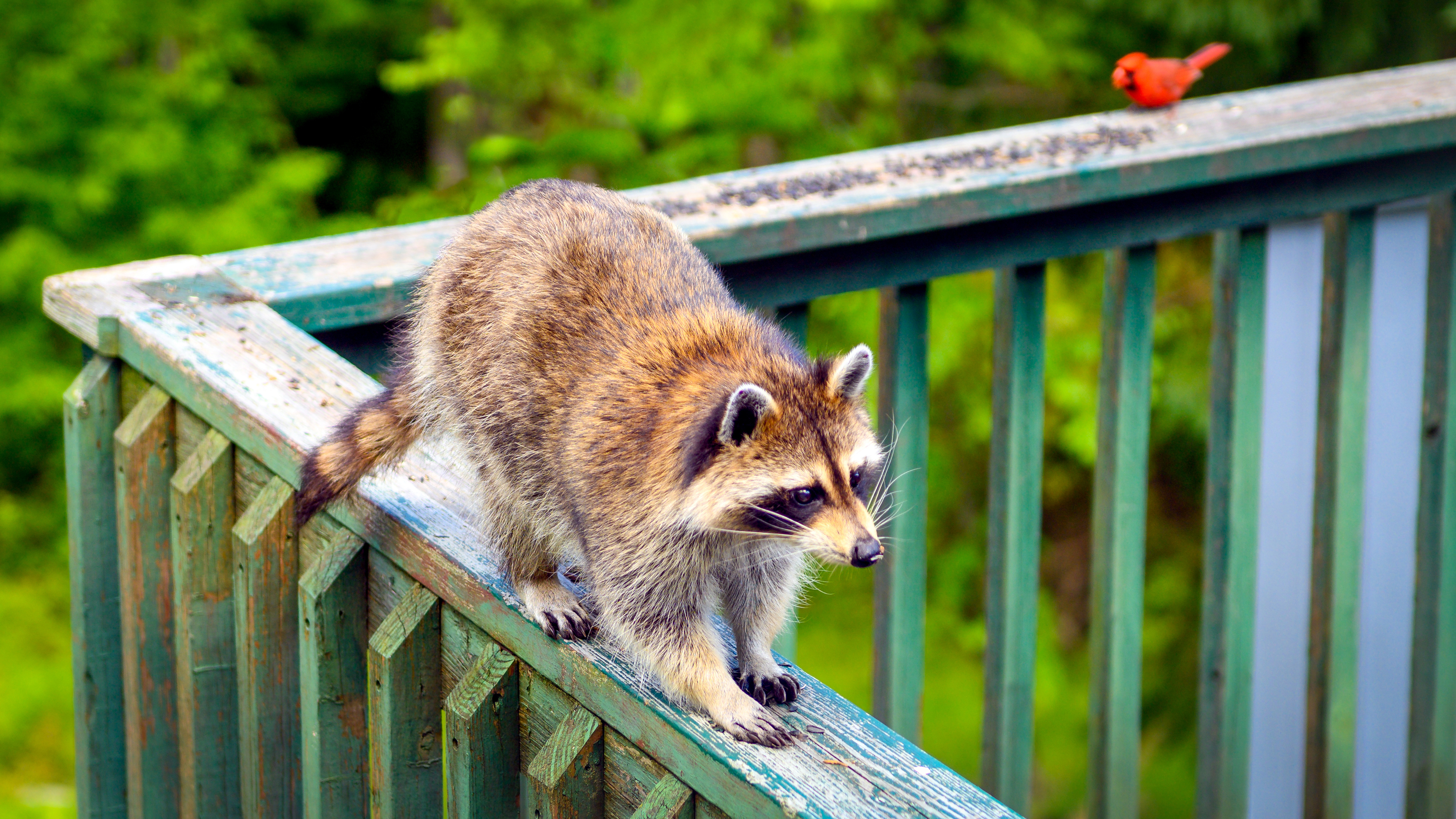 How to keep raccoons away from your backyard or porch
How to keep raccoons away from your backyard or porchLearn how to keep raccoons away, according to experts
By Anna Cottrell